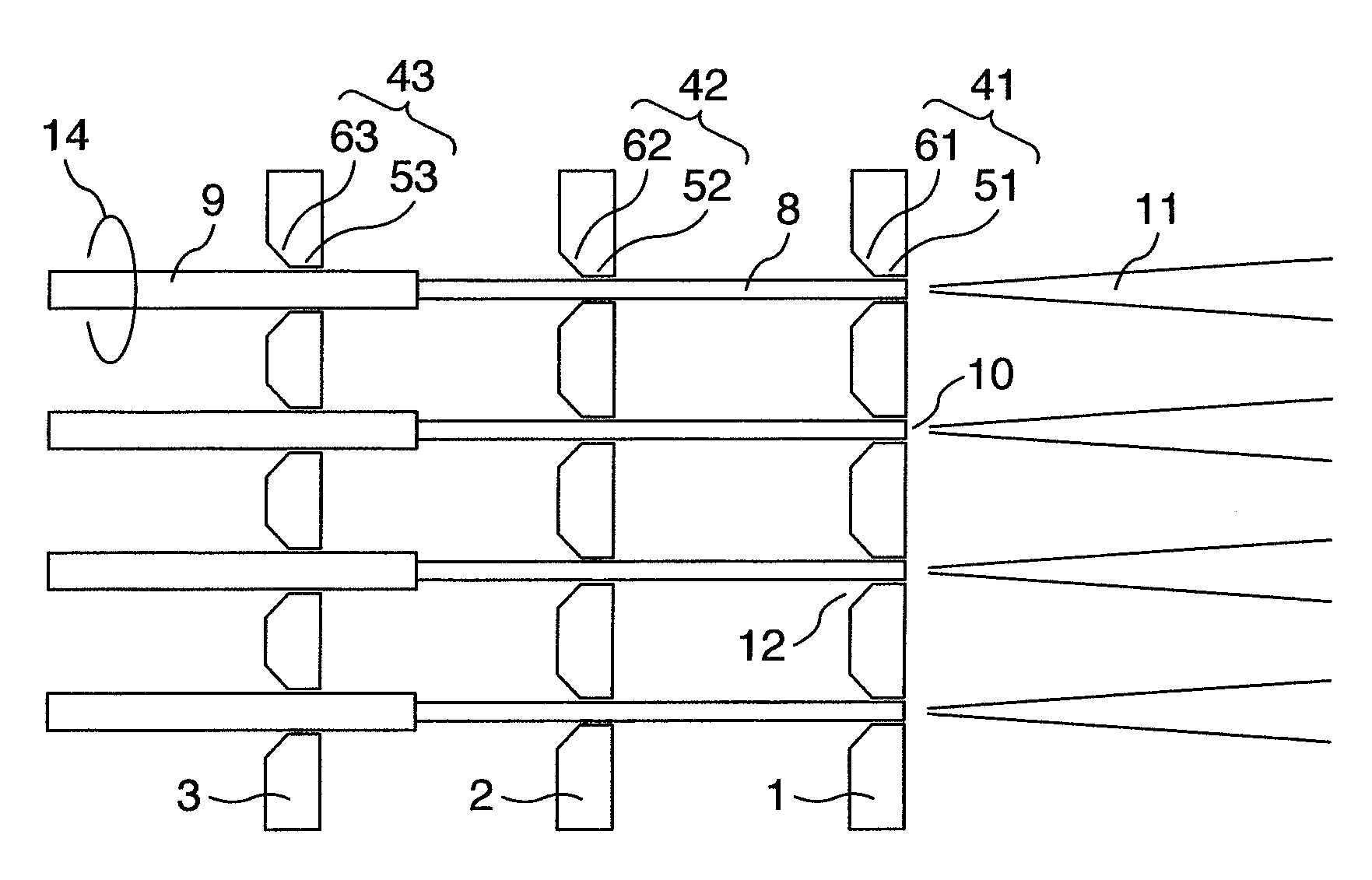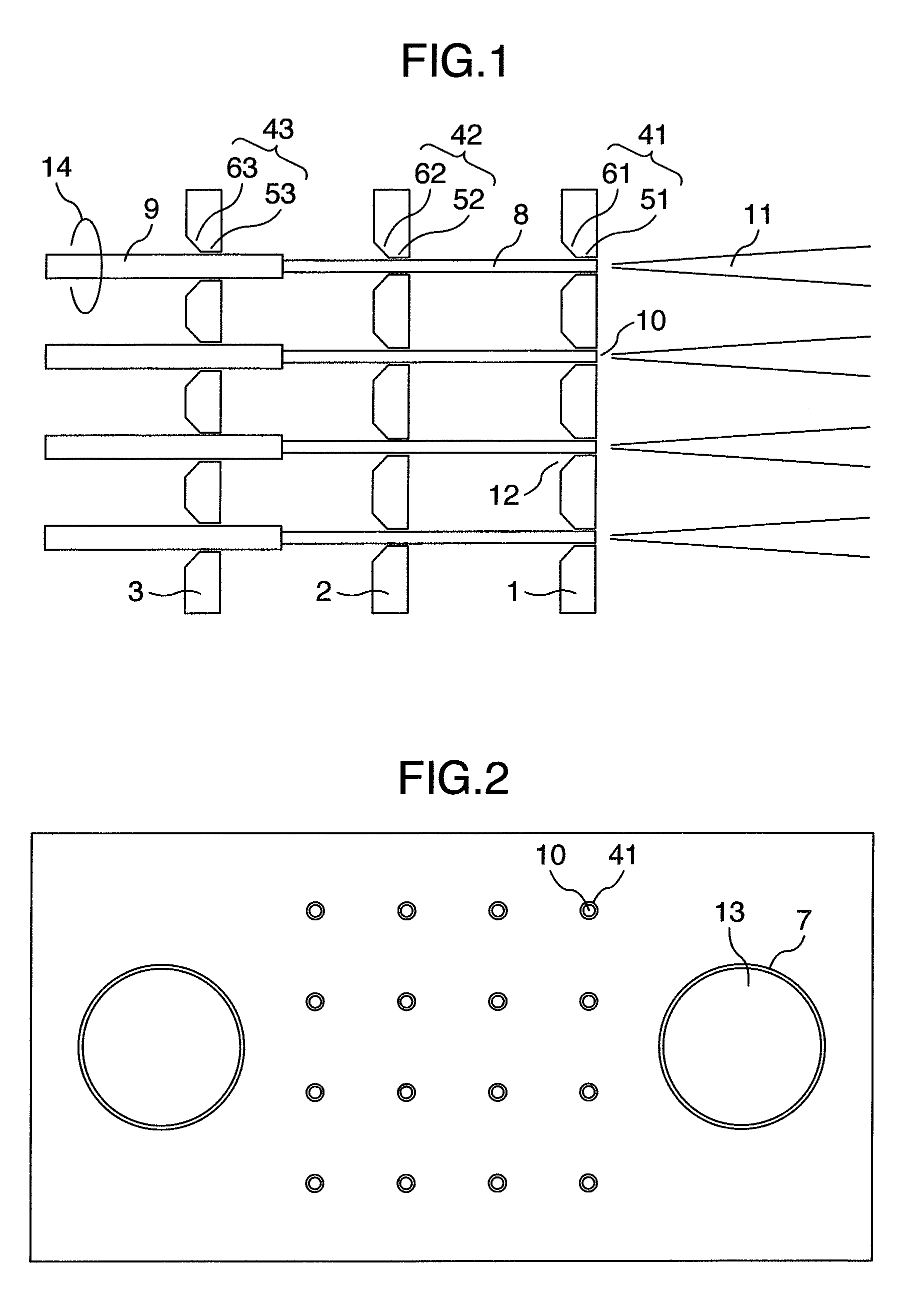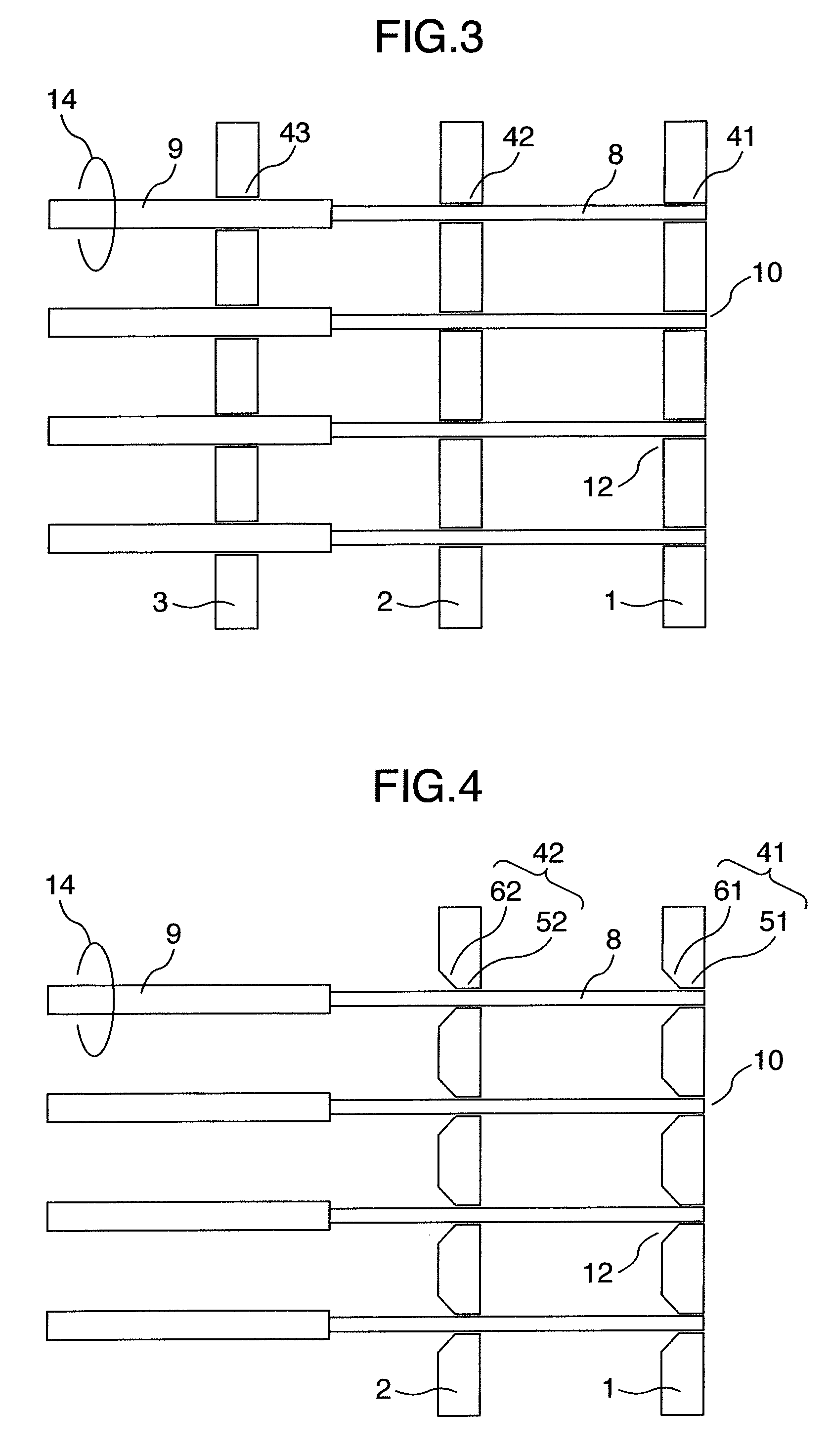Optical fiber array, optical component and optical switch using the optical fiber array
a technology of optical fiber array and optical fiber array, which is applied in the field of optical fiber array, can solve the problems of weak strength of exposed optical fiber, deformation of optical properties, and the inability to house or fix the entire optical fiber portion, and achieve the effects of reducing the number of components, low rigidity, and deformation
- Summary
- Abstract
- Description
- Claims
- Application Information
AI Technical Summary
Benefits of technology
Problems solved by technology
Method used
Image
Examples
embodiment 1
[0063]FIG. 1 is a cross sectional view showing an example of an optical fiber array concerning an embodiment of the present invention and FIG. 2 is the front view. In the optical fiber array shown in FIG. 1, a plurality of coated optical fibers 14; and a first substrate 1, second substrate 2, and third substrate 3 that have a plurality of through-holes 41, 42 and 43 for inserting the coated optical fibers; wherein the substrates have the through-holes opposingly arranged and are arranged in the order of the first substrate, the second substrate, and the third substrate. The each substrate serve as an alignment substrate for aligning the coated optical fibers 14. As shown in FIG. 1, the coated optical fiber 14 is inserted into the through-holes of the opposingly arranged first substrate, second substrate, and third substrate while a protective coating 9 at a tip thereof is removed so as to expose a optical fiber, wherein the through-holes 41 and 42 of the first and second substrates ...
embodiments 2 , 3
Embodiments 2, 3
[0092]For the reference of the pore shape, an optical fiber array in which the taper portion 61 of the first substrate is pyramid shaped and the bottom is a square of side length 140 μm (referred to as Reference Example 1), an optical fiber array in which the bottom is a square of side length 80 μm (referred to as Reference Example 2), and an optical fiber array in which the bottom is a square of side length 110 μm (referred to as Reference Example 3) were manufactured. The parallel pore 51 is in common, and the cross section is a circle with the diameters of 126 μm, which is the same as that of Embodiment 1. FIGS. 8A-8D are front views of the first substrate viewed from the fiber inserting side, i.e., viewed from the second substrate, FIG. 8A shows Embodiment 1, FIG. 8B shows Reference Example 1, FIG. 8C shows Embodiment 2, and FIG. 8D shows Embodiment 3.
[0093]In Reference Example 1, the diameter of the cross section of the parallel pore 51 is smaller than the diame...
embodiment 4
[0098]Moreover, in Embodiment 1, the optical fiber 8 and protective coating 9 of the coated optical fiber 14, and the through-holes 41, 42, and 43 are fixed by adhesive. Apart from this, an optical fiber array was prepared in the same way as Embodiment 1 except that the optical fiber 8 and the through-hole 41 are not fixed by adhesive (Embodiment 4). In Embodiment 4, the gap between the optical fiber 8 of the coated optical fiber 14 and the parallel pore 51 of the through-hole 41 is as extremely small as 1 μm and the optical fiber 8 is fitted therein, and thus the optical fiber 8 is fixed to the parallel pore 51 even without using adhesive. In this case, it is possible to prevent that the adhesive goes around to the coated optical fiber tip 10 to interfere with the emission of light, and further there is an advantage because the step of dripping adhesive may be saved. However, when the gap between the optical fiber 8 of the coated optical fiber 14 and the parallel pore 51 of the thr...
PUM
 Login to View More
Login to View More Abstract
Description
Claims
Application Information
 Login to View More
Login to View More - R&D
- Intellectual Property
- Life Sciences
- Materials
- Tech Scout
- Unparalleled Data Quality
- Higher Quality Content
- 60% Fewer Hallucinations
Browse by: Latest US Patents, China's latest patents, Technical Efficacy Thesaurus, Application Domain, Technology Topic, Popular Technical Reports.
© 2025 PatSnap. All rights reserved.Legal|Privacy policy|Modern Slavery Act Transparency Statement|Sitemap|About US| Contact US: help@patsnap.com



